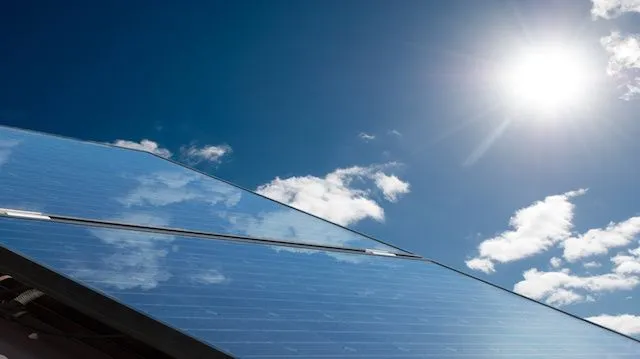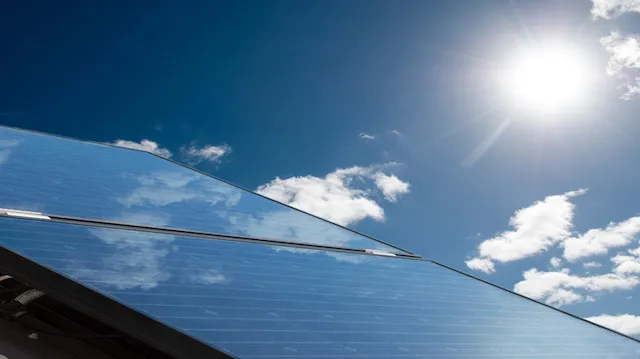
- Share on Facebook17
- Share on Pinterest
- Share on Twitter
Crude oil prices dropped last week to under $30 a barrel for the first time since 2003. Interestingly, that was the year SUV sales peaked in the United States. A dramatic fall in oil prices, along with smaller drops in the prices of natural gas and coal, should likewise be bad news for investments in renewable energy sources like solar and wind. Yet exactly the opposite has been happening.
In late November, just as the global climate change conference began in Paris, Bill Gates announced a multi-billion-dollar initiative to help developed and developing countries more than double their research and development budget for clean energy. In interviews given around that time, Gates said he hoped to attract even more funding for clean energy initiatives from governments and philanthropists around the world.
In fact, billionaires around the globe are investing heavily in solar and wind energy. Sergey Brin and Larry Page, the founders of Google, have solar panels installed at Google headquarters and are deeply involved in researching clean energy, as is headline-grabbing billionaire Richard Branson. Some, like Shi Zhengrong, have even made their billions in the clean energy sector. Suntech Power, founded by Shi Zhengrong, is the largest manufacturer of photovoltaic cells in the world.
Though some venture capital investors became skittish about clean-tech investments after the “clean-tech bubble” of 2008, many other investors with longer timelines and less desire for immediate returns have begun to pour billions into solar and wind energy. Unlike the Gates and Bransons of the world, these investors are not making their investments for purely philanthropic reasons, but because they smell real financial gain. CleanTech Syndicate, a secretive collective of 11 families worth over $60 billion, has invested $1.4 billion in renewables in the last year alone with the goal of making a difference in climate change while reaping a healthy profit along the way.
Solar and wind energy have quickly been gaining traction over the past few years. Energy capacity from solar and wind has tripled since 2008. Though still far behind coal, the most optimistic forecasts for the growth of solar and wind energy for the year 2030 have already been met and surpassed. Several reasons account for this rise in renewable energy, including increased government investment during the recent recession, increased regulations on coal power plants and the natural efficiency that comes from repetition. Jenny Chase, the head of solar at Bloomberg New Energy Finance, put it simply, “The more of something we do, the better we get at it.”
But the real secret to the growth of wind and solar energy is rather obvious: They’ve both gotten much, much cheaper. Solar energy especially has benefited from innovations in technology, declines in cost of materials and an expanded manufacturing base, leading some to believe that by the year 2030 solar energy capacity could increase fivefold and be up to 50 percent cheaper.
This drop in cost led Dan Esty, an environmental law and policy professor at Yale, to argue that the recent drop in oil prices is actually a good thing for solar and wind energy as they will both be forced to become even more economical to compete with fossil fuels. This competition will leave them perfectly positioned when fossil fuels eventually become more expensive.
The issue of cost is especially important in the case of developing nations that are rapidly expanding their energy infrastructure due to growth and industrialization. One of the most pressing concerns of the climate conference in Paris was how to decrease carbon levels without stifling the growth of impoverished and developing nations. Increasingly, the hope is that wind and solar energy can bridge this divide. Recently, India announced an alliance of 120 countries that will work together to develop and implement solar technology. India’s Prime Minister Narendra Modi hopes that heavy investment in solar energy will allow the world’s second most populous country to keep its large coal reserves untapped while still allowing its economy to grow at a steady pace.
China, notorious for its smog-filled horizons, has become the world’s largest producer and consumer of solar panels in recent years and hopes to get 20 percent of its energy supply from renewables by the year 2030. Even Saudi Arabia, the definition of a petro-state, is investing heavily in solar energy, hoping to stem its own consumption of fossil fuels; though of course in the case of Saudi Arabia this is less than altruistic as they hope to sell fuel to other countries for greater profits.
 More optimistically, the increasing accessibility of solar and wind technology has proved particularly useful for less economically stable countries, such as Afghanistan. In a country without a strong central government, it is difficult to develop the infrastructure necessary to generate power for citizens outside of major population centers. However, solar facilities can be built and maintained locally at modest expense allowing for the democratization of electricity in areas where it was previously not viable. This is especially helpful for developing nations, which are largely in tropical and subtropical regions and therefore receive abundant sunlight year round.
More optimistically, the increasing accessibility of solar and wind technology has proved particularly useful for less economically stable countries, such as Afghanistan. In a country without a strong central government, it is difficult to develop the infrastructure necessary to generate power for citizens outside of major population centers. However, solar facilities can be built and maintained locally at modest expense allowing for the democratization of electricity in areas where it was previously not viable. This is especially helpful for developing nations, which are largely in tropical and subtropical regions and therefore receive abundant sunlight year round.
Solar energy is not only growing in developing countries, it’s heating up in the United States as well. In July, the White House announced an initiative to increase the use of “community solar,” a system designed to install solar panels for apartment buildings or neighborhoods instead of requiring each household to install and maintain their own systems. The initiative hopes to extend the use of solar power to those who rent or cannot afford the up-front installation costs of solar panels and is viewed by many as the most significant market for solar growth in the United States.
While solar and wind energy have made great strides in recent years, they still provide only a small fraction of the total energy output worldwide. Last year more than $250 billion was invested in renewable energy, but according to many analysts, that amount would need to quadruple in order to stem the climate change problems caused by fossil fuels.
On the upside, solar and wind energy have a record of far surpassing expectations and the investment and innovation in these technologies is only just beginning.
—The Alternative Daily
Sources:
http://fortune.com/2016/01/14/record-funding-clean-energy
https://www.washingtonpost.com/news/energy-environment/wp/2015/08/18/power-companies-may-have-found-a-new-way-to-crack-into-the-solar-business
http://fortune.com/2015/04/25/billionaires-versus-big-oil
http://www.theguardian.com/environment/2015/nov/27/bill-gates-clean-energy-initiative-paris-climate-talks
https://www.washingtonpost.com/news/energy-environment/wp/2015/07/07/many-americans-lack-access-to-solar-energy-heres-how-obama-plans-to-change-that
http://www.theatlantic.com/technology/archive/2015/12/how-solar-and-wind-got-so-cheap-so-fast/418257
http://www.theguardian.com/global-development-professionals-network/2015/sep/15/five-developing-countries-ditching-fossil-fuels-china-india-costa-rica-afghanistan-albania
- Share on Facebook17
- Share on Pinterest
- Share on Twitter

